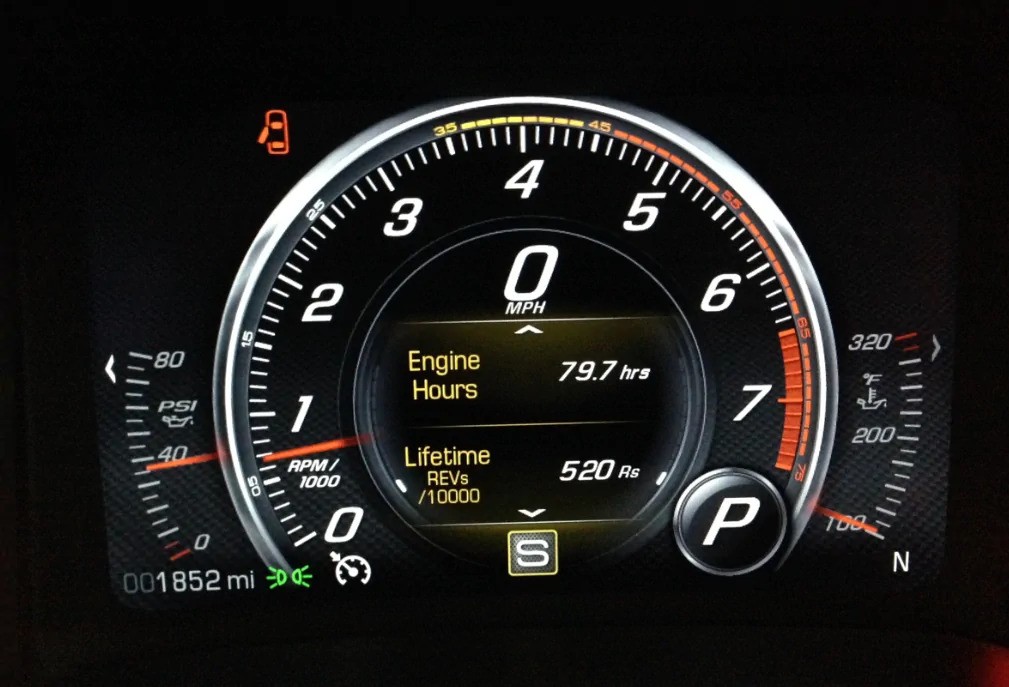Understanding the relationship between engine hours and mileage is crucial for vehicle owners, fleet managers, and buyers. Engine hours help assess wear and tear, schedule maintenance, and make better purchase decisions — especially when mileage alone can be misleading.
In this guide from Mileage Blocker USA, we’ll explain what engine hours are, show how to calculate them using real formulas, and explore factors that affect them. We’ll also touch on how mileage blockers (odometer stoppers) are used in legal scenarios like dyno testing and off-road use.
What Are Engine Hours?
Engine hours refer to the total time your engine is running — whether you’re driving or sitting idle. This measurement is critical for vehicles with high idle time like:
- Delivery trucks
- Police cars
- Commercial vehicles
- Pickup trucks used in urban areas
Unlike mileage, which only measures distance, engine hours reflect how long the engine has been under load, even without movement.
How to Calculate Engine Hours for 100,000 Miles
The basic formula for calculating engine hours is:
Engine Hours = Total Miles ÷ Average Speed
Example Calculations:
Let’s estimate engine hours for 100,000 miles at different average speeds:
- At 50 mph
Engine Hours = 100,000 ÷ 50 = 2,000 hours - At 40 mph
Engine Hours = 100,000 ÷ 40 = 2,500 hours - At 33 mph
Engine Hours = 100,000 ÷ 33 ≈ 3,030 hours - At 30 mph
Engine Hours = 100,000 ÷ 30 ≈ 3,333 hours
These calculations show how lower average speeds, often caused by idling or stop-and-go traffic, significantly increase engine hours — even if mileage stays the same.
Real-World Example
A user shared on a forum that their GMC Sierra had 78,000 miles and 2,858 engine hours.
To find the average speed from this data:
Average Speed = Total Miles ÷ Engine Hours
78,000 ÷ 2,858 ≈ 27.3 mph
This means the vehicle was running at a lower average speed than expected — likely due to extended idle time or city driving.
What Affects Engine Hours?
- Driving Habits
Idling, stop-and-go traffic, and aggressive acceleration increase engine hours. - Vehicle Use
Urban vehicles and fleet trucks idle more, leading to inflated hours even with moderate mileage. - Terrain & Load
Hilly routes or carrying heavy loads puts more strain on the engine over time. - Maintenance
Vehicles with more engine hours require more frequent service — like oil changes and cooling checks.
Understanding Mileage Blockers (Odometer Stoppers)
Mileage blockers (also known as odometer stoppers) are tools that stop mileage recording across all vehicle control units. They are widely used for:
- Dyno testing
- Tuning and remapping
- Off-road racing
- Transporting vehicles without adding road miles
At Mileage Blocker USA, we provide blockers that are:
- Untraceable via diagnostic tools
- Compatible with most U.S. and EU vehicles
- Safe for testing in controlled environments
⚠️ Important Note: Mileage blockers are legal only for testing and off-road use. Using them on public roads to deceive buyers is illegal and considered odometer fraud.
Why Engine Hours Matter in Odometer Fraud
Mileage can be manipulated — but engine hours tell the truth.
In 2024, it was estimated that over 2 million vehicles in the U.S. had odometer fraud, costing buyers thousands. In many cases, the only clue was unusually high engine hours compared to the low mileage.
Example:
A vehicle with:
- 60,000 miles
- 3,000 engine hours
Average speed:
60,000 ÷ 3,000 = 20 mph
That’s too low, suggesting excessive idling or possible mileage rollback.
Tips for Owners and Buyers
Check Both Metrics: Use diagnostic tools to check engine hours along with odometer readings.
Verify Maintenance: Ask for service history and confirm engine hours match expected usage.
Use Mileage Blockers Responsibly: Only for off-road, dyno, or legal test conditions.
Run a VIN History Report: Services like Carfax or AutoCheck can reveal title issues or odometer discrepancies.
Why Choose Mileage Blocker USA?
We provide industry-leading mileage blocker modules for professional use:
- Stops mileage recording in all control units
- Designed for legal off-road & testing purposes
- Works on 250+ models, including BMW, Mercedes, Ford, Dodge, GMC, and more
- Includes support + money-back guarantee
Final Thoughts
If you’re assessing a used vehicle or managing a commercial fleet, don’t rely on mileage alone. Use the formula:
Engine Hours = Miles ÷ Average Speed
And remember — high engine hours may signal more wear than the odometer shows. For performance testing, diagnostics, and off-road purposes, Mileage Blocker USA offers the most advanced and reliable solutions in America.
Need Help?
Chat with us today via WhatsApp or Email for expert advice on our mileage blocker tools.

